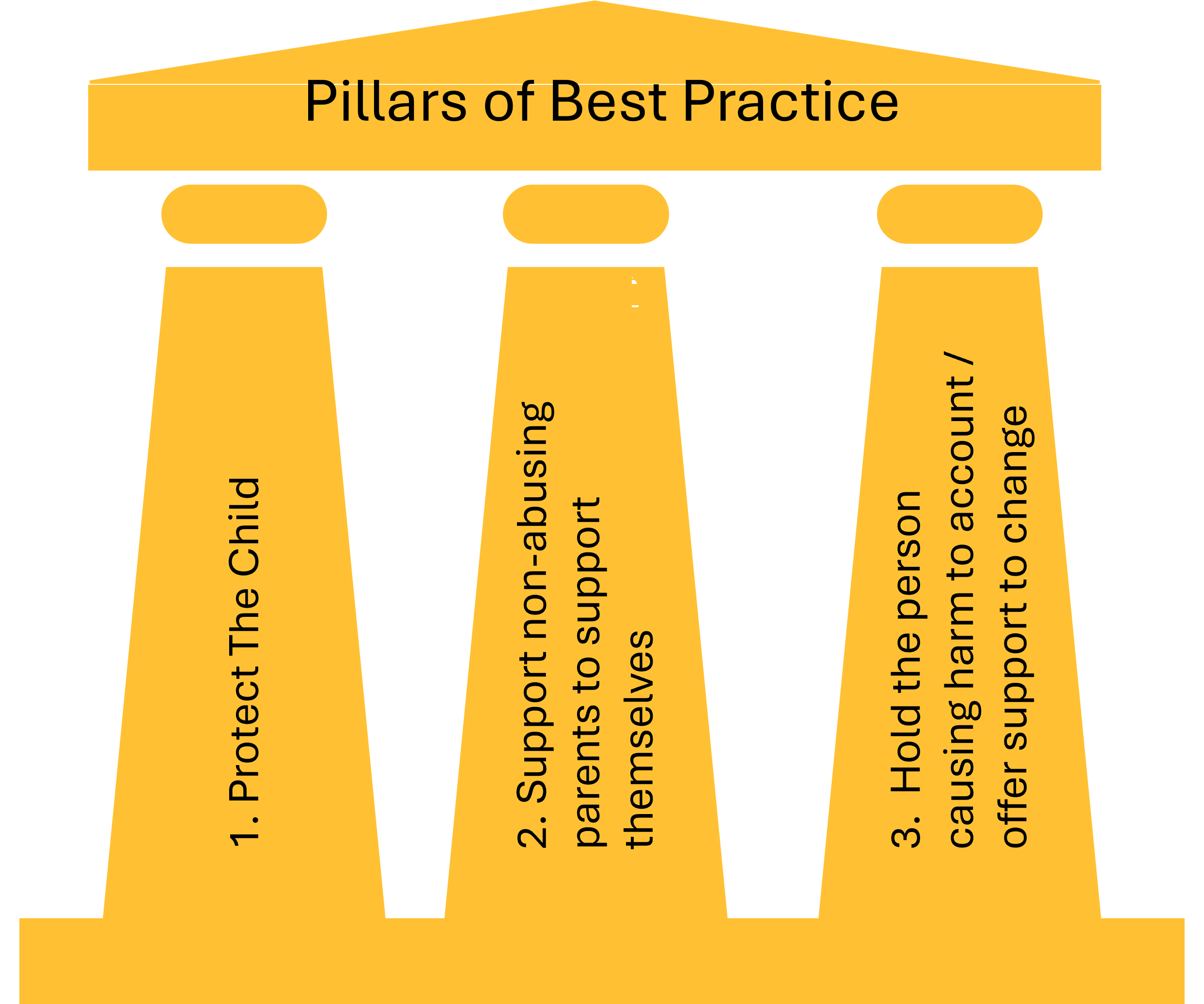
What do we mean by ‘Whole Family Approach’?
The ‘whole family approach’ to Domestic Abuse is a joined-up case management approach that places equal emphasis on engaging and supporting the victim/survivor parent, holding the person causing harm (domestic abuse perpetrator) to account, and protecting any children in the family.
The focus for professionals is on the survivors’ (adult and child) safety and understanding and addressing the risk the person causing harm poses.
The approach is domestic abuse informed, intersectional, gender and trauma informed. Robust information sharing and multi-agency collaboration is essential for this approach to be effective as “no single agency or individual can see the complete picture of the life of a family or individual within that family, but all may have insights and can provide interventions that are crucial to their safety and wellbeing” (Standing Together Against Domestic Abuse).
Our work with families should distribute across the three pillars of best practice.
How to Work Within a Whole Family Approach
In order to work in a whole family approach to Domestic Abuse, four key pivots to practice are required:
Recognising children as survivors and expanding our understanding of coercive control.
Understanding the impact of Domestic Abuse on children and parenting.
Responding to Domestic Abuse from a strengths-based practice approach.
Making people who harm ‘visible’, holding them accountable for their behaviour and providing opportunities for change.
Further Reading & Listening
Stop Blaming Mothers and Ignoring Fathers
David Mandel (Book)
Partnered with a Survivor Ruth Reymundo Mandel and David Mandel (Podcast)
Safe and Together Institute
(Website)
